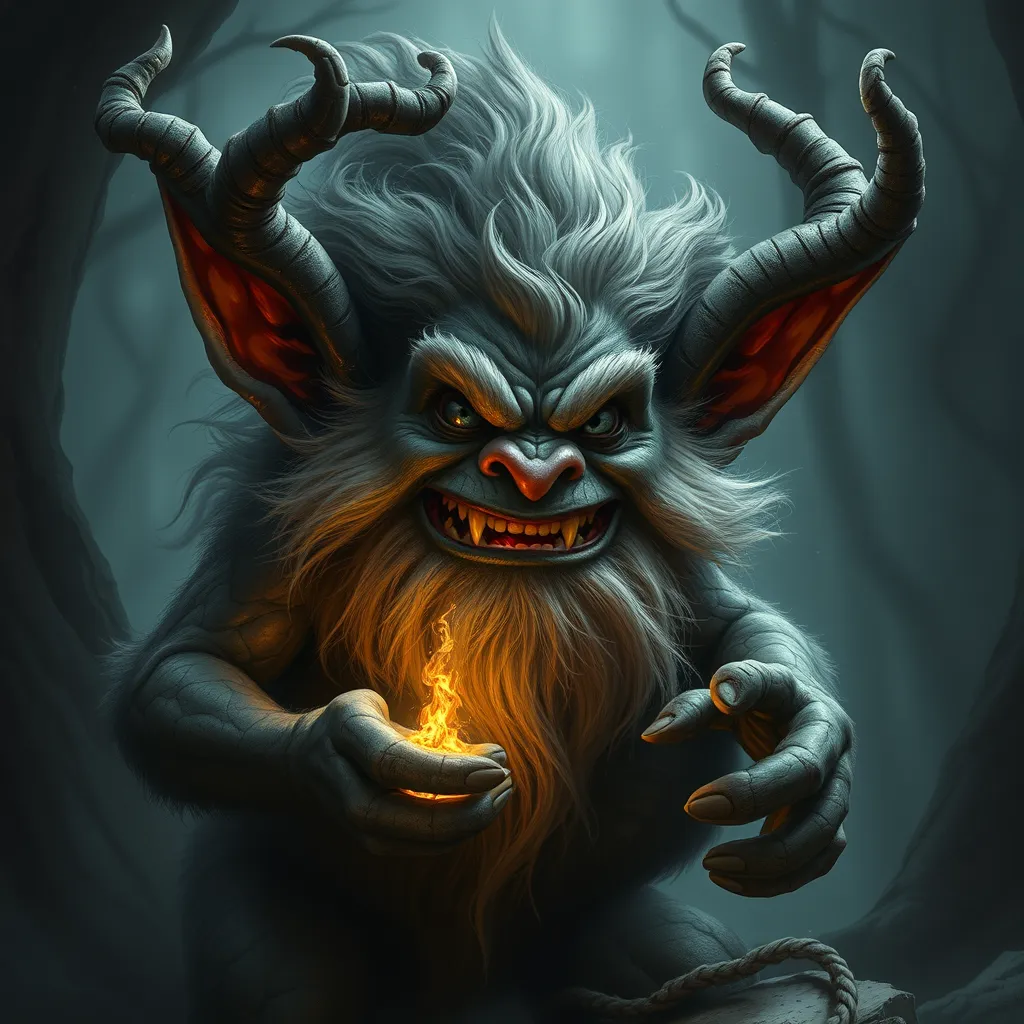The Yeti in the Ancient Writings: Tracing the Myth’s Origins Through Historical Texts
I. Introduction
The Yeti, often referred to as the “Abominable Snowman,” is a mythical creature said to inhabit the snowy terrains of the Himalayas. With its origins rooted in the folklore of the Himalayan region, the Yeti has become a significant symbol in various cultures, representing the mysteries of the natural world and the spiritual beliefs of the people who inhabit these remote areas. This article aims to explore the ancient writings and historical texts that trace the origins of the Yeti myth, shedding light on its cultural significance and the evolution of its narrative over time.
Understanding the origins of the Yeti legend is crucial, not only for appreciating its historical context but also for recognizing the broader implications of how such myths shape cultural identities and beliefs. By examining ancient texts, we can uncover the layers of meaning that have contributed to the Yeti’s place in both folklore and modern culture.
II. The Yeti: A Brief Overview
A. Description of the Yeti in Popular Culture
The Yeti is typically depicted as a large, ape-like creature, covered in white fur, and is often associated with high-altitude regions of the Himalayas. In popular culture, the Yeti has been portrayed in films, literature, and merchandise, often exaggerated to fit the narrative of a monstrous creature lurking in the snowy wilderness.
B. Distinction Between the Yeti and Other Similar Myths
While the Yeti shares similarities with other legendary creatures such as Bigfoot and Sasquatch, it is distinct in its geographical and cultural context. The Yeti is specifically tied to the Himalayan region and has deep roots in the spiritual beliefs of the local populations, whereas Bigfoot is primarily a North American phenomenon.
C. The Yeti’s Representation in Himalayan Folklore
In Himalayan folklore, the Yeti is often viewed as a guardian of the mountains, a creature that embodies both the physical and spiritual realms. Local legends speak of the Yeti as a protector of the environment, and it plays a role in the cultural narratives surrounding nature and survival in harsh climates.
III. Ancient Texts Mentioning the Yeti
A. Analysis of Early References in Religious and Philosophical Texts
Ancient texts, including some religious scriptures, contain references that may be interpreted as allusions to the Yeti. These texts often describe a creature that roams the mountains and is associated with the divine or the supernatural.
B. The Role of Tibetan and Bhutanese Scriptures
Tibetan and Bhutanese scriptures, such as the “Buddhist Tantras,” include teachings that reference mysterious beings inhabiting the mountains. The Yeti is sometimes connected to these beings, highlighting its significance in the spiritual landscape of the region.
C. Examination of Historical Travelers’ Accounts and Their Observations
Travelers and explorers in the 19th and 20th centuries documented their encounters with the Yeti or accounts of local people discussing the creature. These observations contributed to the Western understanding of the Yeti and often sensationalized the myth:
- Some travelers claimed to have seen large footprints in the snow.
- Others reported stories from local villagers about encounters with the Yeti.
IV. The Evolution of the Yeti Myth
A. How the Yeti Myth Has Adapted Over Time
The Yeti myth has evolved significantly, adapting to the social and cultural changes in the regions it inhabits. From a spiritual guardian to a subject of scientific inquiry, the portrayal of the Yeti reflects the shifting attitudes toward nature and the unknown.
B. Influence of Geographical and Cultural Factors on the Yeti’s Portrayal
The geographical location of the Himalayas has played a crucial role in shaping the Yeti’s myth. The harsh and inaccessible terrain has fostered a sense of mystery, allowing the legend to thrive in the imagination of locals and outsiders alike. Cultural factors, such as the integration of Buddhist beliefs, further enrich the narrative.
C. The Impact of Colonial Exploration on the Perception of the Yeti
Colonial explorers, seeking to uncover the mysteries of the East, contributed to the Western fascination with the Yeti. Their accounts often merged fact with fiction, leading to an embellished portrayal of the creature that captured the imaginations of people worldwide.
V. Comparative Analysis: Yeti and Other Mythical Creatures
A. Similarities Between the Yeti and Other Cryptids in Different Cultures
Many cultures have their own versions of legendary creatures that reflect their environmental contexts and societal fears. The Yeti bears similarities to:
- Bigfoot in North America
- El Chupacabra in Latin America
- Ogopogo in Canada
B. The Role of Environmental Factors in Shaping These Myths
Environmental factors, such as dense forests or uncharted mountains, often give rise to legends of elusive creatures. These myths serve as explanations for the unknown, providing comfort in the face of nature’s unpredictability.
C. The Psychological and Sociological Implications of Legendary Creatures
Mythical creatures like the Yeti reflect deeper psychological and sociological themes, including:
- The human tendency to personify the unknown.
- The need for stories that explain environmental phenomena.
- The role of fear and fascination in shaping cultural narratives.
VI. Modern Interpretations and Misunderstandings
A. The Influence of Media and Popular Culture on the Yeti Myth
In modern times, the Yeti has been popularized through films, documentaries, and merchandise, often leading to misconceptions about its nature and existence. Media portrayals tend to sensationalize the Yeti, focusing more on its monstrous aspects rather than its cultural significance.
B. Debunking Common Misconceptions About the Yeti
Common misconceptions about the Yeti include:
- The belief that the Yeti is purely a fictional creation.
- Assumptions that sightings are entirely hoaxes.
In reality, many sightings and stories are rooted in genuine cultural beliefs and experiences.
C. The Balance Between Myth and Reality in Contemporary Discussions
Contemporary discussions about the Yeti often reveal a tension between myth and reality. While some view the Yeti as a symbol of cultural heritage, others seek scientific explanations for alleged sightings. This balance invites a nuanced understanding of how myths can coexist with modern interpretations.
VII. Scholarly Perspectives on the Yeti Myth
A. Overview of Academic Research and Theories Regarding the Yeti
Scholars from various fields, including anthropology, history, and folklore studies, have explored the Yeti myth. Research often focuses on its cultural significance and the factors that contribute to its persistence in the collective imagination.
B. Insights from Anthropologists, Historians, and Folklorists
Insights from these disciplines reveal that the Yeti serves multiple functions in society, from a cautionary tale to a representation of the untamed natural world. These perspectives emphasize the importance of understanding myths within their cultural contexts.
C. The Ongoing Debate About the Yeti’s Existence and Significance
The debate surrounding the Yeti’s existence continues, with some advocating for its scientific investigation while others emphasize its role as a cultural artifact. This ongoing discussion highlights the complexities of belief and skepticism in the realm of cryptozoology.
VIII. Conclusion
In summary, the Yeti myth is a rich tapestry woven from ancient texts, cultural beliefs, and modern interpretations. By examining its origins and evolution, we gain insight into the human experience and our relationship with nature. The enduring fascination with the Yeti reflects our desire to explore the unknown and understand the mysteries that lie beyond our comprehension.
As we delve deeper into the narratives surrounding the Yeti, we are invited to appreciate the intricate web of mythological stories that shape cultures worldwide. The Yeti is not merely a monster of folklore; it is a symbol of humanity’s quest for understanding in a complex and often mysterious world.



